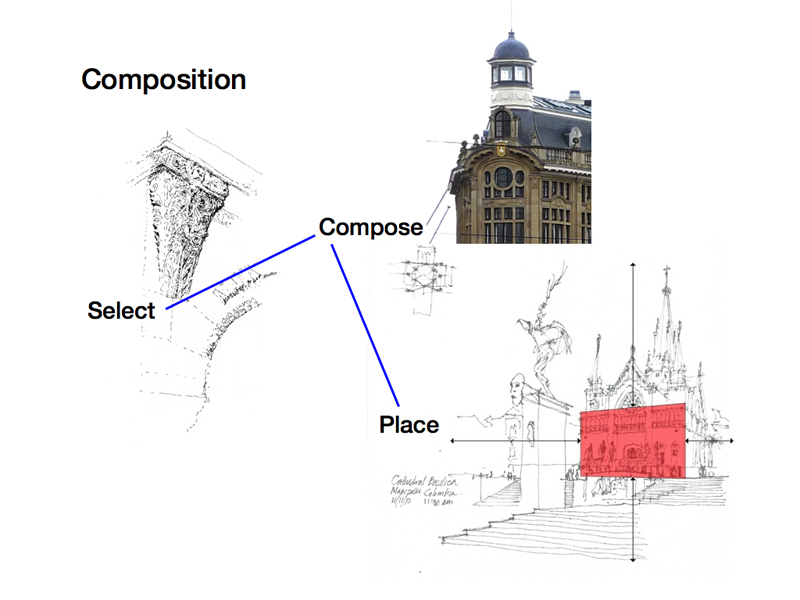In preparing for the Mt. Vernon workshop that Gail Wong and I will be offering this Saturday, I’ve assembled a Keynote presentation to introduce participants to a few basic principles to keep in mind when drawing on location. After teaching for 40 years but continuing to discover aspects of the drawing process through my own as well as others’ observations and experiences, I find it difficult to prepare these presentations.
What I do on an intuitive level—with insights gained through practice and experience—can be difficult to condense into a few fundamental concepts. Yet, in a one-day or even a three-day workshop, one has distill drawing lessons down to a few key ideas that can be more easily digested, especially for beginners. One of these is acquiring a proper point of view, which is vital to producing a good drawing. If one’s vantage point is flawed due to an inherent imbalance of graphic elements, an unexpected or unfortunate alignment of spatial edges, or an ill-considered placement on the page, then all the skill and experience one can muster might not be enough to salvage the drawing. On the other hand, a well composed image can often survive a number of common drawing mistakes.
In each slide of the Keynote presentation, I limit myself to a maximum of three, concisely stated points. In this example, I present three keys to drawing composition.
1. Select: Draw what interests you, what catches your eye—whether it be a detail or a fragment, an entire structure or a spatial environment—but make sure this is a conscious choice.
2. Compose: Vital to composition is walking around until one’s view of the selected subject matter holds the compositional forces that you desire. Understand whether the view is symmetrical or asymmetrical, contains the desired point or area of focus, and has the potential for conveying layers of depth.
3. Place: Understand the proportions and size of the selected image before placing it on the drawing surface or page.
There are, of course, more slides in the presentation and I look forward to seeing how effective they are in the workshop. Preparing a presentation is very much like the drawing process. One never quite knows where it will lead; one can only learn from the experience and improve at the next opportunity.

